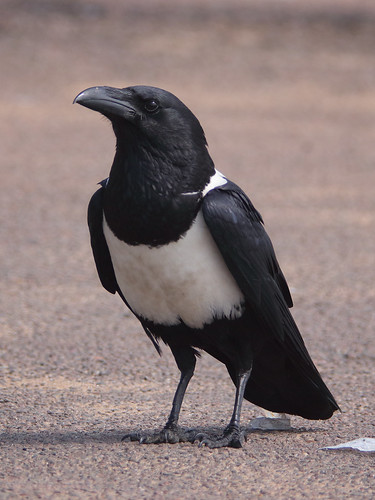When I first heard about a Pied Crow being sighted in East Kent I assumed it was some kind of birders' in-joke. After all, what is a "pied crow" if not the definition of a magpie? Also, there's no such bird mentioned in either the Collins Guide or the British Birds (WILDguides) book, not even in the once-in-a-lifetime lists of obscurities tucked away at the back.
But it turns out the Pied Crow is definitely not a magpie, as I found out when I caught up with it on Broadstairs jetty last Saturday (18 May). Even from a distance the white "vest" was obvious, and the bird itself is bigger than a conventional carrion crow (though not as large as a raven).
So is this smartly-dressed corvid (normally a resident of sub-Saharan Africa) a genuine wild specimen or an escapee? I won't get into the speculation on where it might have come from as there's already plenty of that online by people far more knowledgeable than me on such matters, but I will refer you to this excellent article by Sam Viles on BirdGuides. Will it fly (or hitch a ride) across the Channel or will it continue its tour of Britain's seaside resorts? Like the outcome of B****t, your guess is as good as mine.
 |
| Next stop France? |
As I think I've stated before on this blog, I don't keep a count of the birds I've seen and photographed (although I do keep an index), so it makes little difference to me whether or not it gets accepted onto an official list by the powers-that-be. But I do know that this unusual and striking bird has traveled a long way to get to where I live, so I'm glad I got to see it.
See also:
Birdguides: Pied Crow
Birdforum Opus: Pied Crow







